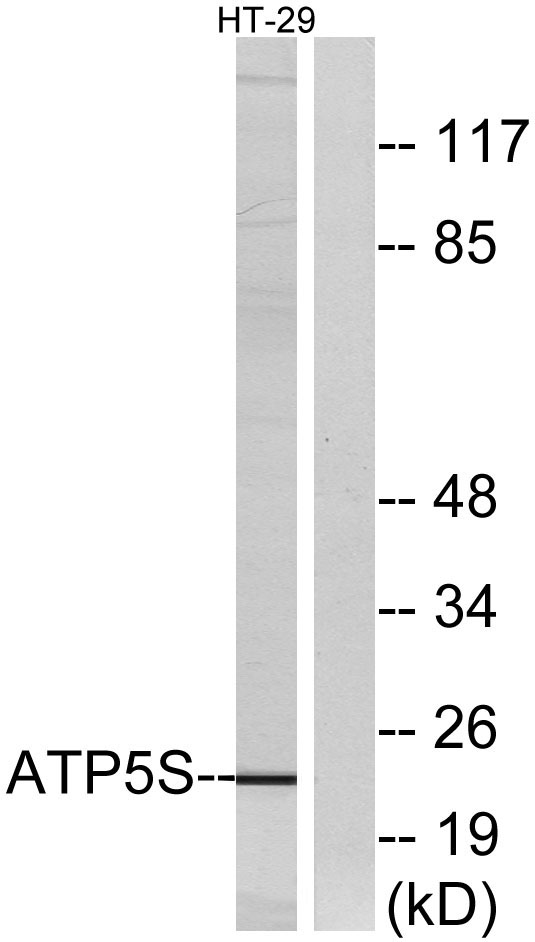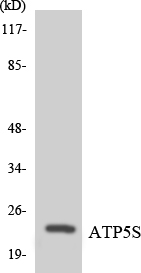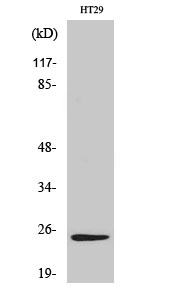产品名称
ATP5S Rabbit Polyclonal Antibody
别名
ATP5S; ATPW; ATP synthase subunit s; mitochondrial; ATP synthase-coupling factor B; FB; Mitochondrial ATP synthase regulatory component factor B
蛋白名称
ATP synthase subunit s mitochondrial
存储缓冲液
Liquid in PBS containing 50% glycerol, 0.5% BSA and 0.02% New type preservative N.
Human Gene Link
http://www.ncbi.nlm.nih.gov/sites/entrez?db=gene&term=27109
Human Swissprot No.
Q99766
Human Swissprot Link
http://www.uniprot.org/uniprotkb/Q99766/entry
Mouse Gene Link
http://www.ncbi.nlm.nih.gov/sites/entrez?db=gene&term=68055
Mouse Swissprot No.
Q9CRA7
Mouse Swissprot Link
http://www.uniprot.org/uniprot/Q9CRA7
免疫原
The antiserum was produced against synthesized peptide derived from human ATP5S. AA range:21-70
特异性
ATP5S Polyclonal Antibody detects endogenous levels of ATP5S protein.
稀释度
WB 1:500 - 1:2000. ELISA: 1:10000. Not yet tested in other applications.
宿主
Polyclonal, Rabbit,IgG
背景介绍
This gene encodes a subunit of mitochondrial ATP synthase. Mitochondrial ATP synthase catalyzes ATP synthesis, utilizing an electrochemical gradient of protons across the inner membrane during oxidative phosphorylation. ATP synthase is composed of two linked multi-subunit complexes: the soluble catalytic core, F1, and the membrane-spanning component, Fo, comprising the proton channel. This gene encodes the subunit s, also known as factor B, of the proton channel. This subunit is necessary for the energy transduction activity of the ATP synthase complexes. Alternatively spliced transcript variants encoding different isoforms have been identified. [provided by RefSeq, Jul 2008],
组织表达
Brain,Hippocampus,Uterus,
细胞定位
Mitochondrion . Mitochondrion inner membrane .
功能
caution:It is uncertain whether Met-1 or Met-16 is the initiator.,function:Involved in regulation of mitochondrial membrane ATP synthase. Necessary for H(+) conduction of ATP synthase.,similarity:Belongs to the ATP synthase subunit s family.,subunit:Monomer. Associates with ATP synthase.,
纯化
The antibody was affinity-purified from rabbit antiserum by affinity-chromatography using epitope-specific immunogen.



